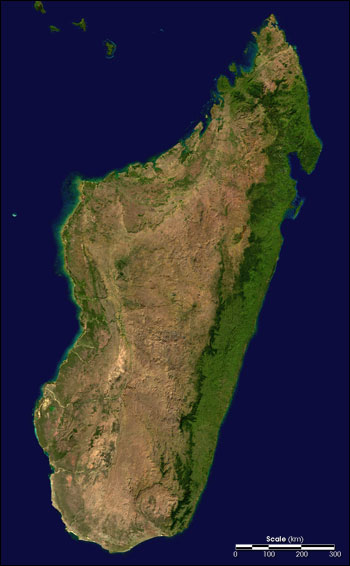

Answers from a Parallel Universe |
|||
“At the time this modeling project was going on, we were also identifying chameleon specimens we had collected on previous expeditions to Madagascar,” explains Raxworthy, “so the discoveries were going on in parallel universes, so to speak. Then one day I realized that one of the new species we had discovered actually came from an over-predicted area on one of the model’s maps. It finally occurred to me that maybe each of those areas that we thought were model foul-ups could actually be the location of new species.” |
|||

As the team identified more of the specimens, the number of newly identified species began to mount. In all, the over-predicted areas identified by the models were home to seven new species of chameleon that had never been documented by scientists before. Intensive field surveys in other parts of the country had turned up just two new species. That seven were found in the models’ over-predicted areas is too unusual to be just a coincidence. Raxworthy and his colleagues have apparently discovered a powerful new tool for identifying locations with a much-greater-than-average chance of being home to previously unknown species. It’s not hard to understand why Raxworthy is so excited about this project’s success. He quickly lines up the ways in which it will be useful. “These models could save us a lot of time by helping us decide where in the country to go. When you write grants and ask people for money, it would be really helpful to be able to demonstrate what your chances are [for finding new species]. It could certainly help us use our resources on the most promising field locations.” |
Recent field studies in thinly explored areas of Madagascar have turned up several new species of chameleons. Scientists quickly realized that it was more than a coincidence that many new species were being discovered in the areas where the computer models had appeared to over-predict the presence of chameleons. Far from being in error, the computer models were successfully predicting the areas most likely to harbor previously unknown species! (Photograph copyright Chris Raxworthy) |
||

In a more theoretical direction, he says, these models could help biologists go back in time and describe where a species might have lived at some point in the past, for example, before humans radically changed the landscape. They could be used to predict how the ranges and locations of today’s species will change with climate change, another factor to consider when planning parks and preserves. Assuming the field of conservation biology is filled by people who prefer to work outdoors, how might other biologists react to the use of satellite data? Did Raxworthy think his colleagues might be concerned that his project’s successful use of satellite data might be used by those who provide research dollars to justify scaling back field expeditions? “Not likely,” he says, “because in the end, in order to know what species are out there, you have to go into the field. That won’t change.” Instead he points to the difficulties facing those in his line of work. “Madagascar is vast and much is being lost. Any tool that makes describing the island’s biodiversity more efficient will be welcomed.”
|
This image, a composite of many scenes from the Moderate Resolution Imaging Spectroradiometer (MODIS), shows Madagascar from the vantage point of space. Madagascar’s large size and diverse terrain prevent detailed, ground-based studies of the entire island. Satellite-based remote sensing enables scientists to explore the areas most likely to yield discoveries of new species. (NASA Blue Marble image courtesy Reto Stöckli, NASA Earth Observatory.) |
||